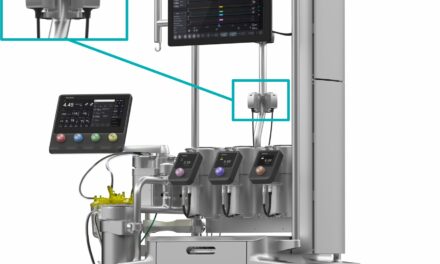Masimo’s ORi values “were significantly correlated with PaO2 measured simultaneously” and that ORi “could provide useful information on arterial oxygenation even during one-lung ventilation,” according to new research published in the Journal of Anesthesia.
The research, conducted by South Korean scientists at Sungkyunkwan University School of Medicine, investigated the association of Masimo ORi and the arterial partial pressure of oxygen (PaO2) in 554 patients who underwent non-cardiac thoracic surgery during one-lung ventilation (OLV). This is the largest study to date on ORi, according to Masimo.
Noninvasive, continuous Masimo ORi provides continuous, real-time insight into the oxygenation of hemoglobin in the moderate hyperoxic range (PaO2 > 100 and ≤ 250 mmHg) to be used alongside arterial blood gas analyses, which have the drawbacks of being invasive, intermittent, and delayed. ORi is trended continuously with SpO2 as a unit-less index between 0.00 and 1.00 to extend the visibility of the patient oxygenation beyond SpO2 under supplemental oxygen. By convention, SpO2 is limited to an upper limit of 100%, but oxygenation is not limited and can rise into hyperoxia (higher than normal oxygenation state) when supplemental oxygen is administered. ORi provides clinicians with additional visibility, as a complement to SpO2 monitoring with Masimo SET® pulse oximetry, into when oxygenation is increased into, or decreased out of, moderate hyperoxia, in real time.
Noting the importance of striving to prevent hyperoxemia and hypoxemia especially during surgery requiring OLV, because of the risk of pulmonary complications, the researchers sought to evaluate a noninvasive, continuous method of predicting imminent over- or under-oxygenation to overcome the drawbacks of invasive blood gas analysis alone, using Masimo ORi. To evaluate ORi’s performance, they analyzed data collected from 554 patients who underwent non-cardiac elective thoracic surgery requiring OLV between January 1 and December 31, 2022 at a tertiary hospital in South Korea. During anesthesia, ORi was monitored using Masimo RD rainbow SET® Pulse CO-Oximetry sensors, and blood gas analysis was performed 15 minutes after OLV was initiated. The researchers’ primary endpoint was the association between simultaneous ORi and PaO2 values. They also sought to identify risk factors for PaO2 < 150 mmHg, based on their clinical experience that most patients with PaO2 > 150 mmHg in this scenario rarely show hypoxemia.
The researchers found a linear correlation between ORi and PaO2 measured simultaneously. Using linear regression analysis, they found there was a statistically significant positive relationship between ORi and PaO2 measured 15 minutes after OLV initiation (r2 = 0.5752, p < 0.001). Using receiver-operated curve (ROC) analysis, they identified an optimal cut-off ORi value of 0.27 to detect PaO2 ≥ 150 mmHg during OLV (area under the ROC curve of 0.96, 95% confidence interval of 0.94 – 0.98, sensitivity 0.909, specificity 0.932). Of the 11 potential predictors for PaO2 < 150 mmHg identified by the researchers, ORi was highly predictive (odds ratio 0.001, p < 0.001).
The researchers concluded, “ORi values during one-lung ventilation were significantly correlated with PaO2 measured simultaneously. Therefore, the ORi monitor can provide useful information for estimating the PaO2 value even during one-lung ventilation.”
In the US, ORi has been granted a De Novo by the FDA to be used in patients undergoing surgery as an adjunct to SpO2 for increased monitoring resolution of elevated hemoglobin oxygen saturation levels (e.g., due to administration of supplemental oxygen). The ORi feature is indicated for the monitoring of hemoglobin oxygen saturation levels in patients 18 years and older (adults and transitional adolescents) on supplemental oxygen during no-motion conditions perioperatively in hospital environments.










